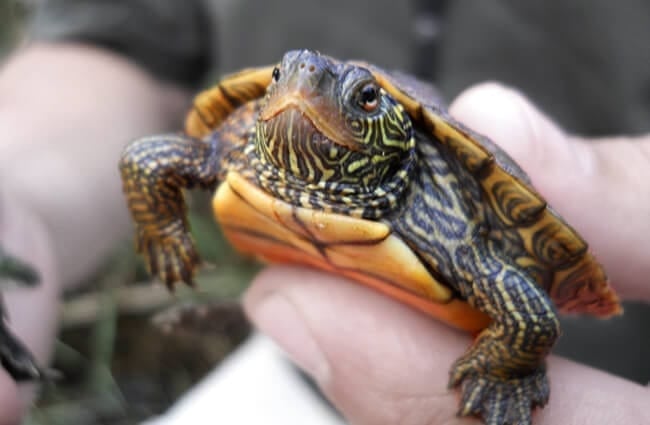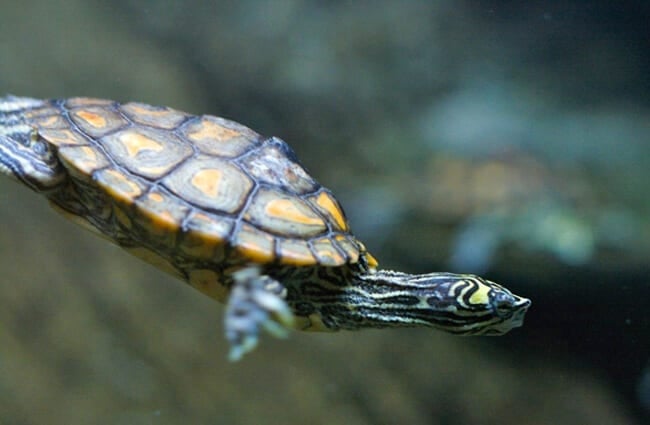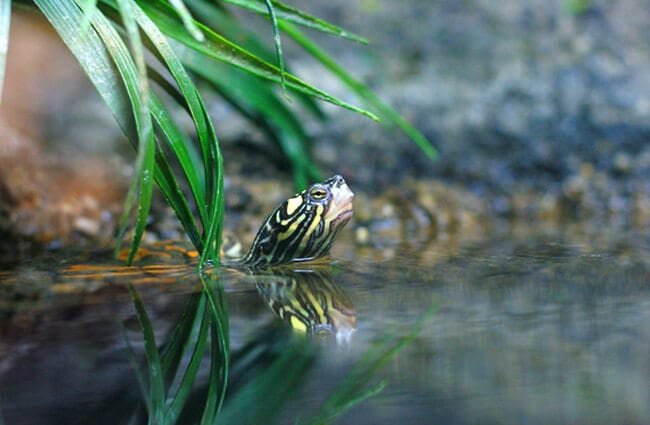An Introduction to the Intricate World of Map Turtles
Map turtles, a captivating group within the pond turtle family, are renowned for their distinctive map‑like markings on their shells. These aquatic reptiles represent a fascinating example of adaptation and resilience, playing a crucial role in the ecosystems they inhabit. This comprehensive guide delves into the world of map turtles, exploring their biology, behavior, habitat, and conservation status, and offering valuable insights for researchers, animal enthusiasts, and anyone curious about these remarkable creatures.

Understanding Map Turtle Species
The genus Graptemys encompasses a variety of map turtle species, each with unique characteristics. Some of the most well‑known include the Mississippi map turtle, northern map turtle, Ouachita map turtle, and yellow‑blotched map turtle. While they share common traits, subtle differences in shell patterns, coloration, and habitat preferences distinguish each species. For instance, the Mississippi map turtle boasts a prominent, intricate map on its carapace, while the northern map turtle displays a more subdued pattern. The yellow‑blotched map turtle, as its name suggests, exhibits distinctive yellow blotches on its shell. These variations highlight the remarkable biodiversity within the genus.
Physical Characteristics
Map turtles are relatively small reptiles, with adults typically ranging from 3.5 to 10.5 inches in carapace length. They possess a flattened carapace adorned with intricate patterns resembling a topographical map. These patterns, often featuring lines, spots, and blotches, vary depending on the species and individual. The plastron, or lower shell, is typically pale yellow or cream‑colored. Map turtles also have a distinctive elongated head and a prominent dorsal keel—a raised ridge running along the center of their carapace. Males generally exhibit a more elongated keel and a longer tail than females.
Habitat and Distribution
Map turtles are native to the eastern and central United States, primarily inhabiting rivers, streams, and lakes with abundant vegetation and slow‑moving currents. They prefer habitats with plenty of basking sites, such as logs, rocks, or overhanging branches. The distribution of different map turtle species varies, with some species confined to specific river systems or regions. For example, the Mississippi map turtle is commonly found in the Mississippi River basin, while the northern map turtle inhabits the Great Lakes region. These turtles have adapted to thrive in freshwater environments, exhibiting a strong preference for clear, clean water.

Finding Map Turtles in the Wild
If you’re venturing into map turtle habitat, look for them basking on logs or rocks in the sun. They are often found near areas with aquatic vegetation, which provides food and shelter. Observing them from a distance is crucial to avoid disturbing their natural behavior. Remember to respect their space and avoid approaching or handling them, as this can cause stress and disrupt their activity. The best time to spot map turtles is during the warmer months, when they are most active.
Diet and Feeding Behavior
Map turtles are omnivores, with a diet that varies depending on age, species, and habitat. Young map turtles primarily feed on insects, crustaceans, and small invertebrates. As they mature, their diet expands to include fish, snails, mussels, and aquatic plants. They are opportunistic feeders, readily consuming whatever food is available in their environment. Map turtles typically forage in shallow water, using their sharp beaks to capture prey or graze on vegetation. They are also known to consume carrion, playing a role in the decomposition of organic matter.
Reproduction and Life Cycle
Map turtles exhibit a unique reproductive strategy. Mating typically occurs in the spring, often in or near the water. Following mating, females search for suitable nesting sites, usually on sandy or loamy banks. They excavate nests using their hind feet and lay a clutch of 2 to 30 eggs. The number of clutches per year varies depending on the species and individual. Incubation lasts approximately 70 to 100 days, depending on temperature. Hatchlings emerge from the nest in late summer or early fall. Sex determination in map turtles is temperature‑dependent; warmer temperatures tend to produce females, while cooler temperatures produce males.

Contribution to Ecosystem
Map turtles play an important role in maintaining the health of their ecosystems. As omnivores, they help control populations of insects, snails, and other invertebrates. They also contribute to the nutrient cycle by consuming organic matter and excreting waste. Furthermore, map turtles serve as prey for larger animals, such as raccoons, foxes, and birds of prey. Their presence indicates a healthy and diverse aquatic environment.
Interactions with Humans and Conservation Status
Map turtle populations have declined in recent years due to habitat loss, pollution, and over‑collection for the pet trade. Dam construction, agricultural runoff, and industrial pollution have degraded their aquatic habitats, reducing food availability and nesting sites. Over‑collection for the pet trade has also contributed to population declines, particularly for species with limited ranges. As a result, several map turtle species are listed as threatened or endangered under the Endangered Species Act. Conservation efforts include habitat restoration, pollution control, and regulations on the collection and trade of map turtles. Responsible pet ownership and public awareness are also crucial for protecting these remarkable reptiles.
Caring for Map Turtles in Captivity
If you are considering keeping a map turtle as a pet, it is essential to provide appropriate care. A large aquarium with a basking area, clean water, and a varied diet is necessary. Regular water changes and filtration are crucial for maintaining water quality. A basking area with a heat lamp allows the turtle to regulate its body temperature. A varied diet consisting of insects, fish, snails, and aquatic plants ensures proper nutrition. It is important to research the specific needs of the species you are keeping and provide a suitable environment. Owning a map turtle is a long‑term commitment, as they can live for several decades.

Fascinating Facts about Map Turtles
- Map turtles get their name from the intricate map‑like patterns on their shells.
- The sex of hatchlings is determined by the temperature of the nest during incubation.
- Map turtles can live for over 30 years in captivity.
- They are excellent swimmers and can hold their breath for extended periods.
- Map turtles are often seen basking in the sun to regulate their body temperature.
- They play a vital role in maintaining the health of their aquatic ecosystems.
- Some species of map turtles are highly endangered due to habitat loss and over‑collection.

Conclusion
Map turtles are remarkable creatures that deserve our admiration and protection. Their unique characteristics, ecological importance, and fascinating life history make them a valuable part of our natural world. By understanding their needs and supporting conservation efforts, we can help ensure that these magnificent reptiles continue to thrive for generations to come.

![Red Angus Closeup of a beautiful Red Angus cowPhoto by: U.S. Department of Agriculture [pubic domain]https://creativecommons.org/licenses/by/2.0/](https://animals.net/wp-content/uploads/2020/03/Red-Angus-4-238x178.jpg)




![Red Angus Closeup of a beautiful Red Angus cowPhoto by: U.S. Department of Agriculture [pubic domain]https://creativecommons.org/licenses/by/2.0/](https://animals.net/wp-content/uploads/2020/03/Red-Angus-4-100x75.jpg)

